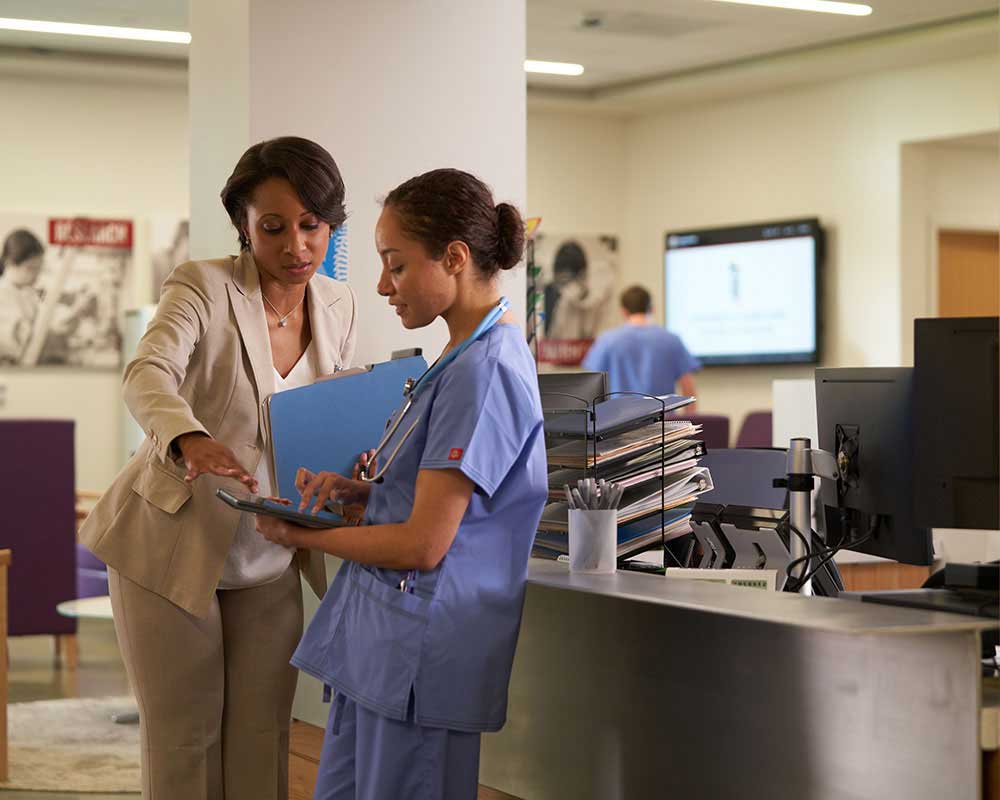Leading Abilities Required to Master Medical Administration Responsibility Today
Leading Abilities Required to Master Medical Administration Responsibility Today
Blog Article
Ideal Practices in Medical Management for Improving Performance and Reducing Prices
In the ever-evolving landscape of medical care, the pursuit of ideal methods in medical administration is paramount for improving efficiency and suppressing costs. By integrating sophisticated innovations such as electronic wellness records and telemedicine, healthcare carriers can simplify procedures and boost person treatment.
Leveraging Advanced Innovation
In today's rapidly advancing healthcare landscape, leveraging sophisticated modern technology is no more optional yet important for reliable clinical management. The integration of digital remedies right into healthcare systems has actually transformed the way centers run, improving procedures and improving person care. Electronic Health And Wellness Records (EHRs) are crucial, giving comprehensive client information that can be accessed instantaneously by authorized personnel, hence decreasing redundancy and reducing errors. By systematizing person details, EHRs get rid of the demand for troublesome paperwork and help with smooth communication amongst healthcare providers.
Telemedicine is an additional technological innovation that has actually changed person communication. It uses comfort for both patients and health care specialists by allowing remote appointments, which can minimize the requirement for in-person gos to and maximize appointment organizing. Additionally, telehealth systems can prolong healthcare accessibility to country or underserved locations, bridging voids in care distribution.
Furthermore, making use of Expert system (AI) and device learning is ending up being significantly widespread in anticipating analytics, enabling early detection of potential wellness issues and more informed decision-making. These modern technologies, when incorporated efficiently, can boost diagnostic precision and individualize individual therapy strategies, ultimately bring about improved medical care results and operational effectiveness.
Optimizing Source Allowance
Effective source allotment is critical for optimizing the performance of medical management. By tactically handling sources such as workers, equipment, and finances, health care centers can significantly boost their operational performance, improve individual outcomes, and reduce unnecessary expenses. The primary step in maximizing resource allowance involves conducting a detailed evaluation of present assets and determining areas where resources might be underutilized or exhausted. This assessment needs to be data-driven, making use of metrics and analytics to inform decision-making procedures.
Focusing on resource allotment based on patient needs and solution demands is crucial. Carrying out versatile staffing versions can likewise maximize labor resources by adjusting personnel allowance in reaction to varying person volumes.
Monetary sources ought to be carefully kept an eye on and allocated with strategic insight to sustain both temporary functional requirements and long-term institutional goals. This consists of investing in training programs that improve personnel competencies and embracing energy-efficient practices that lower functional costs (medical administration). Eventually, an enhanced resource allowance method fosters a lasting medical care setting that is responsive, effective, and economically prudent
Streamlining Workflow Processes
When healthcare facilities aim to enhance operational effectiveness, enhancing process processes becomes a pivotal focus. Reliable workflows minimize redundancy, remove unneeded actions, and boost sychronisation among medical care professionals. This strategy not just accelerates service delivery however additionally improves the top quality of patient treatment.

Following, innovation integration plays a considerable duty in improving process. Applying digital wellness documents (EHRs) and computerized doctor order access (CPOE) systems decreases documentation, reduces human mistake, and makes sure information is obtainable to all relevant employees. Furthermore, leveraging telemedicine platforms can improve patient appointments and follow-ups, lowering the stress on physical facilities.

Ultimately, streamlined workflows bring about set you back decreases and enhanced patient fulfillment, cultivating an extra lasting healthcare atmosphere.
Enhancing Data Management
Structure upon streamlined operations, optimizing information administration becomes an essential part in progressing medical care administration. Reliable information administration systems are essential for preserving accurate person documents, enhancing decision-making, and ensuring conformity with governing requirements. By executing robust information monitoring solutions, health care centers can enhance the high quality of person care while at the same time decreasing operational expenses.
One key aspect of improving data administration is the assimilation of sophisticated electronic health and wellness document (EHR) systems. These systems facilitate the smooth exchange of person information across different departments, get redirected here lowering replication of examinations and reducing errors. A properly designed EHR system sustains data analytics, making it possible for healthcare providers to determine patterns and make notified decisions pertaining to person treatment.
Additionally, guarding client information is paramount. Adopting extensive cybersecurity actions, consisting of security and routine audits, makes sure the integrity and privacy of delicate information. This not just protects people but also keeps the institution's reputation.
Buying staff training is another essential variable. Informing healthcare specialists on data monitoring methods enhances their capability to successfully make use of modern technology, resulting in boosted person end results. To conclude, boosting data management with sophisticated technology and comprehensive training is vital for Continue accomplishing effectiveness and price decrease in medical administration.
Fostering Collaborative Interaction
An important element ahead of time clinical management is cultivating collaborative communication amongst health care specialists. Effective communication is paramount for guaranteeing smooth individual treatment, optimizing therapy outcomes, and reducing errors. By urging open dialogue and coordination throughout multidisciplinary groups, medical care companies can boost their operational efficiency and minimize unneeded costs.
Central to this method is the assimilation of interaction modern technologies such as electronic health documents (EHRs) and secure messaging systems, which promote the quick exchange of vital person information. These devices allow health care providers to access and share information in real time, making sure that all employee are informed and lined up in their decision-making procedures. Furthermore, regular group conferences and interdisciplinary rounds can better promote a society of cooperation and liability.
Educating programs concentrated on boosting interaction skills are additionally essential. These programs can aid personnel create the capability to share information plainly and listen actively, hence lowering misunderstandings and cultivating a helpful work setting. In enhancement, embracing standard communication protocols, such as SBAR (Scenario, History, Assessment, Referral), can improve the exchange of details, guaranteeing that important information are shared succinctly and effectively. Ultimately, fostering joint interaction results in enhanced healthcare shipment and cost financial savings (medical administration).

Conclusion
Including sophisticated modern technology, such as digital health records and telemedicine, along with optimized source allocation and structured process procedures, is crucial for boosting effectiveness in clinical administration. Effective information management and promoting collaborative communication amongst health care groups are crucial for minimizing redundancies and improving treatment top quality. By focusing on preventive care and engaging in quality improvement initiatives, medical care companies can accomplish considerable cost savings and boosted person end results, consequently making sure sustainable healthcare delivery in a significantly complex setting.
Report this page